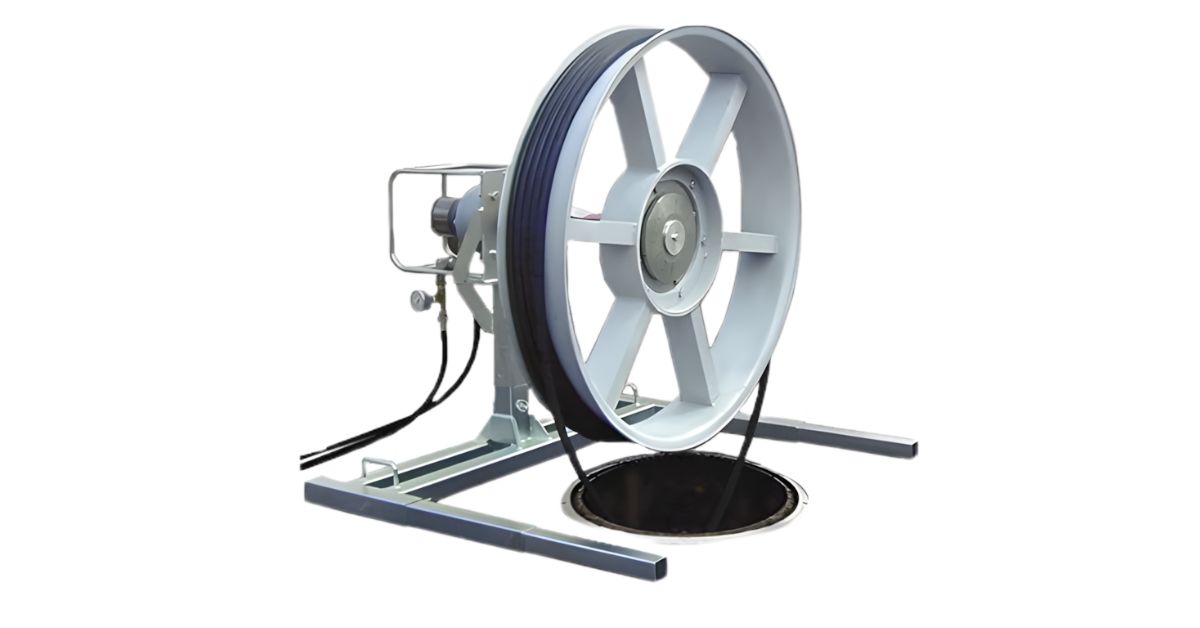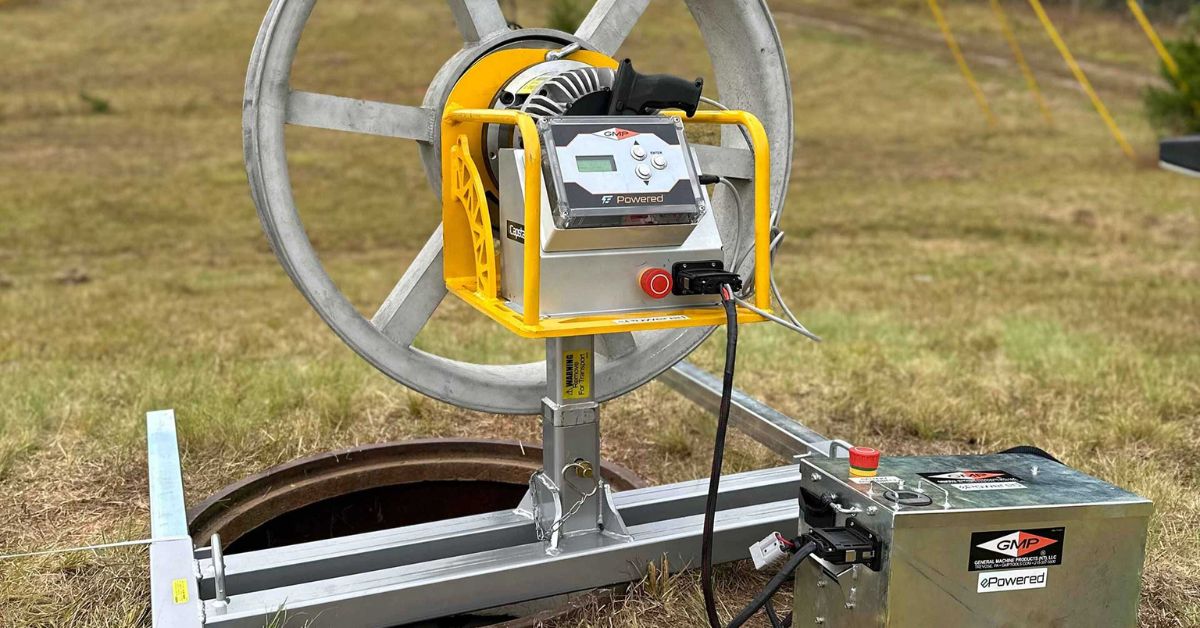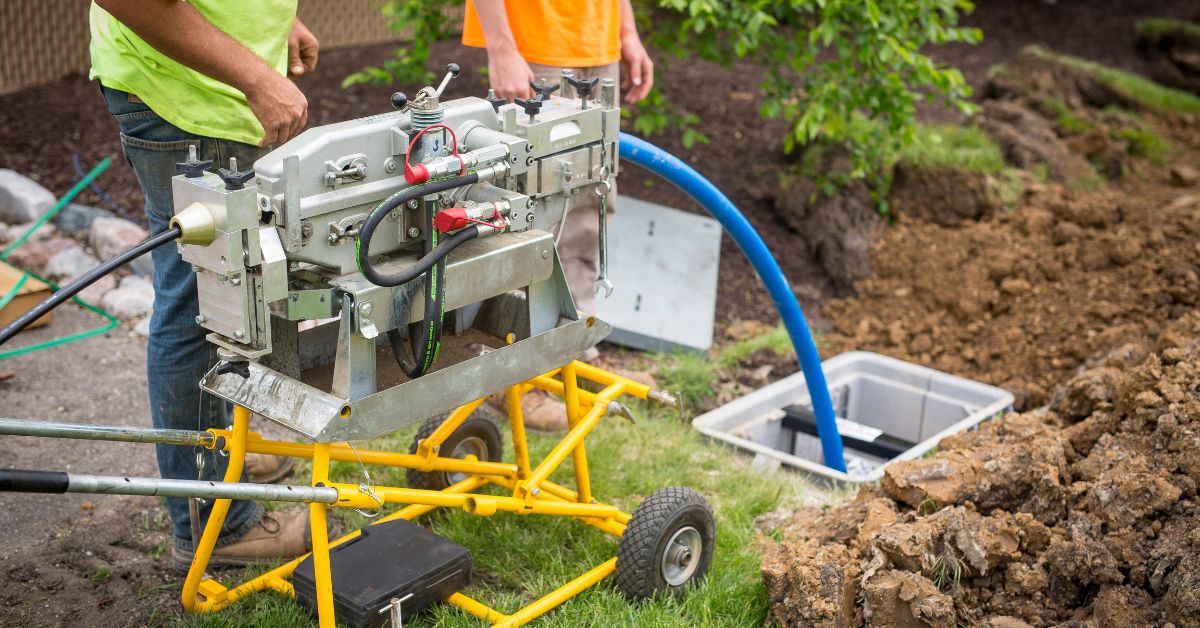No products in the cart.
Underground Cable Puller Safety Tips for Fiber Crews
Home Underground Cable Puller Safety Tips for Fiber Crews
- Home
- Resource Hub
- Millennium Blog
- Underground Cable Puller Safety Tips for Fiber Crews

Installing fiber optic cable requires precision, skill, and a commitment to safety, especially when using powerful underground cable pullers. While these tools boost efficiency, their complexity introduces risks that demand proactive management.
This guide provides a comprehensive overview of underground cable puller safety tips for fiber crews. By adhering to these protocols, you can ensure the protection of personnel, the integrity of the equipment, and the successful completion of the project.
Understanding Underground Cable Pullers
An underground cable puller is a powerful piece of mechanical equipment designed to pull fiber optic, electrical, or communication cables through conduits or ducts. These machines provide consistent and controlled force, which is critical for navigating the cable through long, often complex, underground pathways without causing damage.
The primary use for these pullers in fiber optic installations is to manage the tension-sensitive nature of fiber cables. Unlike traditional copper wiring, fiber optic cables are susceptible to damage from excessive pulling force, sharp bends, or twisting. Cable pullers help mitigate these risks by applying smooth, regulated tension throughout the pull. Using a puller offers several key benefits:
- Increased Efficiency: Pullers significantly speed up the installation process compared to manual methods, especially over long distances.
- Reduced Labor: These machines reduce the physical strain on crews and often allow for smaller teams to complete large-scale projects.
- Damage Prevention: By maintaining a consistent pulling force, they protect expensive fiber optic cables from stress that could impair performance or require costly replacement.
- Enhanced Safety: When used correctly, pullers eliminate many of the manual handling hazards associated with pulling heavy cables.

Key Safety Considerations Before Operation
A safe operation begins long before the cable puller is activated. Proper planning and preparation are fundamental to preventing accidents and ensuring a smooth installation.
Conduct a Thorough Site Assessment
Before any equipment arrives on site, the crew leader must conduct a comprehensive assessment of the work area. This inspection should identify all potential hazards that could interfere with the pulling operation. Key elements to evaluate include:
- Terrain and Ground Conditions: Assess the stability of the ground where the puller and other equipment will be positioned. Uneven or soft ground may require stabilization to prevent the machinery from shifting during operation.
- Existing Utilities: Always verify the location of underground utilities such as gas lines, water pipes, and other electrical conduits. Consult official “call before you dig” services and site plans to prevent catastrophic strikes.
- Environmental Factors: Consider weather conditions. Rain can create slippery surfaces and compromise ground stability, while extreme temperatures can affect both crew performance and equipment function.
- Public and Vehicle Traffic: If the work area is near roads or public pathways, implement proper traffic control measures, including signage, barriers, and flaggers, to protect workers and the public.
Selecting the Right Equipment
Choosing the appropriate cable puller for the job is a critical safety and operational decision. Not all pullers are suitable for every type of installation. Consider the following factors:
- Pulling Capacity: The puller must have a pulling capacity that aligns with the cable manufacturer’s specifications for maximum allowable tension. Using a puller that is too powerful can easily damage the fiber, while one that is underpowered will struggle to complete the pull.
- Conduit Length and Condition: The length of the conduit, the number of bends, and its overall condition will determine the required pulling force.
- Worksite Footprint: For projects in restrictive urban environments, select a puller with a smaller footprint. Equipment like the GMP eCapstan is ideal for tight spaces and offers quiet operation, which is beneficial in residential areas.
Importance of Pre-Operation Checks
You must inspect piece of equipment thoroughly before each use. A pre-operation check ensures that the cable puller is in safe working order and helps identify potential issues before they become critical failures. The inspection checklist should include:
- Fluid Levels: Check hydraulic fluid and fuel levels.
- Mechanical Components: Inspect ropes, capstans, and clutches for signs of wear, fraying, or damage.
- Safety Features: Verify that all safety guards, emergency stops, and control functions are operational.
- Power Source: Ensure the hydraulic power source or battery is functioning correctly and all connections are secure.
Any defects or malfunctions discovered during the inspection must be addressed and repaired by a qualified technician before the equipment is used.

Safe Operating Procedures
With planning and inspections complete, the focus shifts to the safe execution of the pulling operation. Adhering to strict operating procedures is essential for crew safety.
Personal Protective Equipment (PPE)
All personnel involved in the pulling operation must wear appropriate PPE. This is the first line of defense against workplace hazards. Standard PPE for this task includes:
- Hard Hats
- Safety Glasses with Side Shields
- High-Visibility Vests
- Steel-Toed Boots
- Gloves suitable for handling cables and equipment.
Setting Up and Aligning the Cable Puller
Proper setup is crucial for a safe and effective pull. The cable puller must be anchored securely on stable, level ground. The alignment between the capstan, the conduit entrance, and the cable reel is critical. Misalignment can cause the rope to rub against the edge of the conduit, leading to increased friction, rope damage, and uneven tension on the fiber cable. Use pulleys and guides as needed to maintain a straight pulling path.
Monitoring Tension and Speed
Throughout the pulling process, one crew member must be designated to monitor the tension gauge or dynamometer. This individual’s sole responsibility is to ensure the pulling force remains within the cable manufacturer’s specified limits. Exceeding these limits, even for a moment, can cause irreparable damage to the fiber optic cable. Pulling speed should also be controlled and kept at a steady, moderate pace to prevent sudden jerks or surges in tension.
Potential Hazards and How to Mitigate Them
Fiber crews face several common hazards during underground pulling operations. Identifying these risks is the first step toward mitigating them.
- Equipment Malfunction: A sudden failure of the puller, rope, or anchoring system can be extremely dangerous. Regular maintenance and pre-operation inspections are the best defense.
- Cable Damage: Snags within the conduit can cause tension to spike, snapping the cable or the pull rope. If tension begins to rise unexpectedly, stop the pull immediately and investigate the cause.
- Environmental Hazards: Changing weather conditions can introduce new risks. Stop work if conditions become unsafe (for example:, lightning, heavy rain causing unstable ground).
- Human Factor: Inattention and miscommunication are common causes of accidents. Ensure all crew members understand their roles and maintain clear lines of communication, especially between the puller operator and the crew member feeding the cable.
Uphold Your Commitment to Safety
Safety in underground fiber optic installation is not a matter of chance; it is the result of diligent planning, rigorous procedures, and a shared commitment from every crew member. By following essential safety tips for underground cable pullers, fiber crews can protect themselves from harm and deliver high-quality network infrastructure.
Your projects deserve the best and safest equipment. If you need reliable, well-maintained tools for your next fiber deployment, explore the underground cable puller rentals from Millennium. Our equipment experts can help you select the right puller to maximize efficiency and uphold the highest safety standards on your job site.
